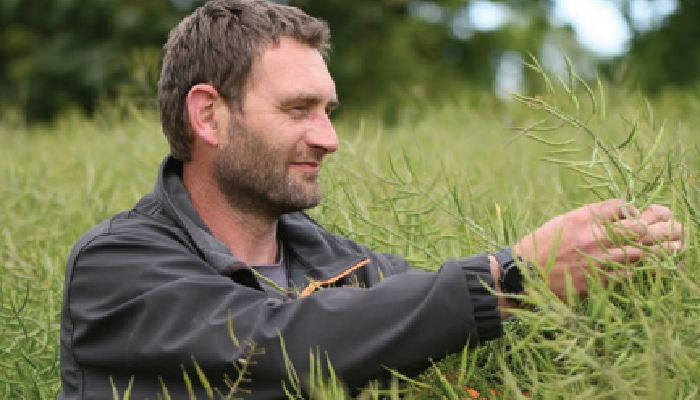04 November 2022
The financial and environmental benefits of using protected urea

Don Somers, Signpost Tillage Farmer, gives an update from his farm.
Drilling was completed early last week, finishing with winter oats. I drilled more winter oats than initially intended at the expense of winter rye to create more opportunities for winter wheat next autumn.
The winter oats also offer the opportunity to grow a crop with a significant grain output with modest nitrogen inputs.
Drilling was delayed as late as possible to reduce barley yellow dwarf virus (BYDV) pressure.
Winter wheat drilled after oilseed rape had a level of slug damage that warranted the application of slug pellets. Winter barley had little or no slug damage and will most likely not require slug pellets in the future.
Oilseed rape got off to a slow start due to dry seedbeds. It has progressed well in recent weeks and is on track for having good canopies, which will enable significant saving on nitrogen inputs next spring.
Crops will require the application of a fungicide for the control of light leaf spot in the near future.
Cover crops are not particularly large, which is not reflective of drilling dates. This can be attributed to a lack of soil moisture until early September.
They have progressed well in recent weeks taking up free soil nitrogen, providing a food source for soil biology and improving overall soil health.
I have also filled a shed with chicken litter which will enable significant fertiliser savings with spring crops while adding valuable organic matter to soils.
Having 18pc of soil on the farm at index four for phosphorus and 74pc at index four for potassium, I have decided to use straight P and K next spring, so I can variable-rate apply the crop requirements and make significant savings, given the price of artificial fertilisers.
I have also bought protected urea for next spring which worked very well this year. The cost saving is significant: 1kg of nitrogen in the form of urea costs 62pc of the same amount in calcium ammonia nitrate or CAN.
On lighter free-draining soils in a wet growing season the nutrient use efficiency of urea is higher, and its use will lower the overall carbon footprint of the farm.
A planned strategy for fertiliser usage will be completed with my advisor before the end of the year.
I am also involved in an aphid trapping project with Liam Sheppard from Teagasc this autumn, looking at the number of BYDV-carrying and non-BYDV-carrying aphid species, along with other insects.
This information helps us make a more informed decision as to when an insecticide is warranted and when it should be applied.
Don Somers farms at Oilgate, Co Wexford; his advisors are John Pettit, Mark Plunkett
This article was first published in the Farming Independent
